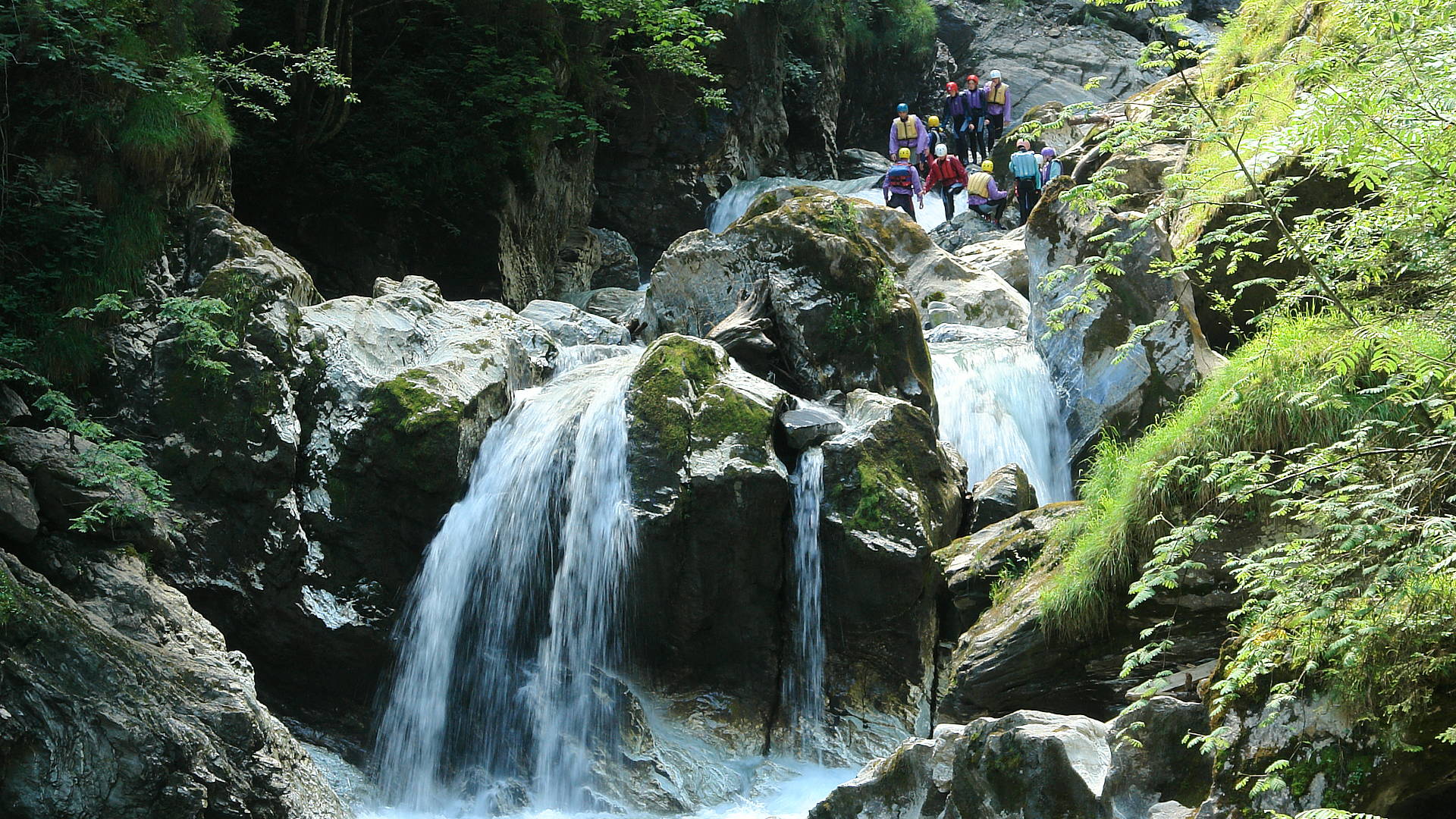History
The Kitzlochklamm is a natural wonderful filled with a magic all its own. The name actually derives from the young goats which were inclined to make their way up to the cool gorge in the hot summer months. Here, the waters of the Rauriser Ache have eaten away at the limestone shale, chiseling out vertical walls over the course of thousands of years.
The mine you pass by here is called the "Ritzstollen", once dug out by miners in search of gold. It dates back to 1553. As the path through the gorge was being made, iron tools from Roman times were discovered. In 1833, Johann Zehentner – a local administrator for the imperial government – was already busy making the gorge more accessible. In 1877, the path was improved and extended through the full length of the gorge. Anton Embach began building work in 1877, commencing with a section from down on the right banks of the Rauriser Ache to the actual start of the gorge itself. This was followed higher up with the broadening of the old “Kitzloch” and building of the high “Embach Walkway”, which was subsequently abandoned in the following year and redesigned as a series of switchbacks, making access to the drip-stone cave far easier. From the drip-stone cave, the path was taken along the left bank and out through the gorge. A connection was created to earlier paths, as was the “Embacher Schreckbrücke” bridge and gallery, where visitors are greeted by magnificent views of the imposing waterfalls.
At the end of the past century, the gorge must already have been very famous, since even then it recorded tens of thousands of visitors.
After a tragic accident in in July 1974, the gorge was closed to the public. In 1976, it reopened with newly built bridges and walkways, now boasting countless visitors from near and far who come to marvel at this beautiful natural monument every year.





